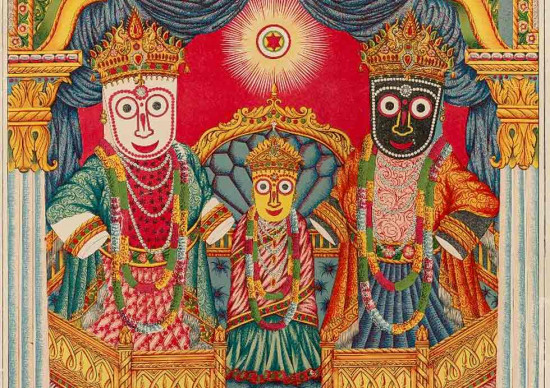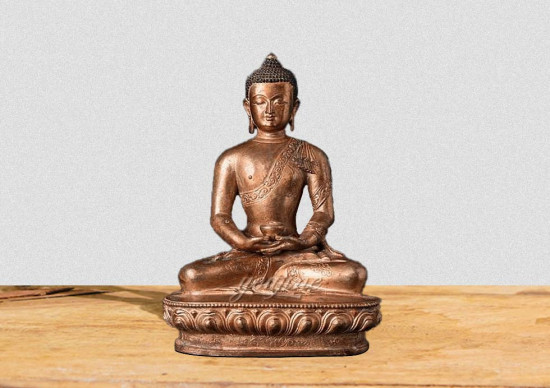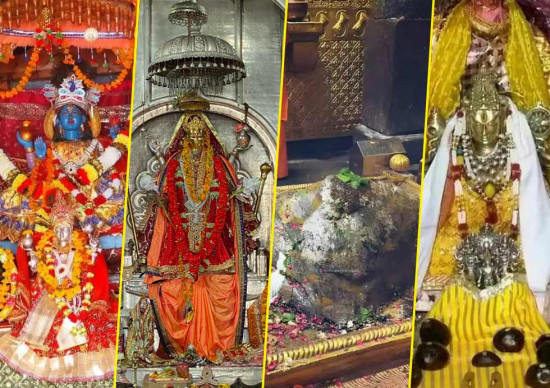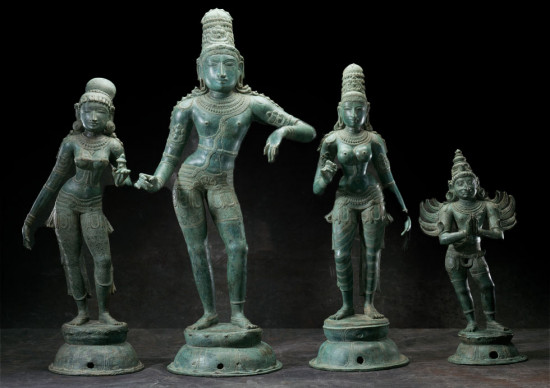
Lord Ganesha, the beloved God of obstacles, revered for his wisdom, intellect, and ability to remove and add obstacles, occupies a central role in Hinduism and beyond. As a symbol of prosperity and good fortune, Ganesha's presence transcends geographical boundaries, with his statues and idols celebrated worldwide. Each region and community brings a distinctive flair to depicting Ganesha, blending local traditions with the universal reverence for this divine figure. From ancient sculptures in India to contemporary artworks in Western galleries, the diverse representations of Ganesha not only showcase artistic creativity but also highlight the enduring spiritual significance of this multifaceted deity across cultures.
Revering Ganesha: Diverse Idols Across Cultures
Ganesha idols hold a special place in various cultures worldwide, reflecting both artistic creativity and spiritual devotion. These idols, crafted from materials ranging from clay to precious metals, showcase unique interpretations of Lord Ganesha. In India, for example, artisans meticulously sculpt idols for festivals like Ganesh Chaturthi, creating elaborate figures that symbolize prosperity and the removal of obstacles. Meanwhile, in Southeast Asia, such as Indonesia and Thailand, towering statues of Ganesha stand as testaments to local reverence and artistic expression. Even in unexpected places like Ireland and Japan, Ganesha idols blend seamlessly with local cultures, illustrating the deity's universal appeal and adaptability across borders. Each Ganesha idol tells a story of cultural heritage and spiritual significance, embodying qualities of wisdom, intellect, and divine grace revered by millions worldwide.

Exploring Global Variations of Lord Ganesha Idols
Unique Ganesha Idols Across India
In India, the diversity of Ganesha idols reflects a rich tapestry of cultural expressions and artistic interpretations. From the ancient stone sculptures of Elephanta Caves near Mumbai to the intricately crafted silver idols of Thanjavur in Tamil Nadu, each region offers a unique portrayal of Lord Ganesha. The idols vary in size, material, and style, with some adorned in vibrant colors and others exquisitely detailed with symbolic attributes like the lotus and modak (sweet dumpling). Each idol not only embodies Ganesha's role as the remover of obstacles but also celebrates local traditions and craftsmanship, making them cherished symbols of faith and creativity across India.
Lord Ganesh Idol at Prambanan Temple Complex, Indonesia
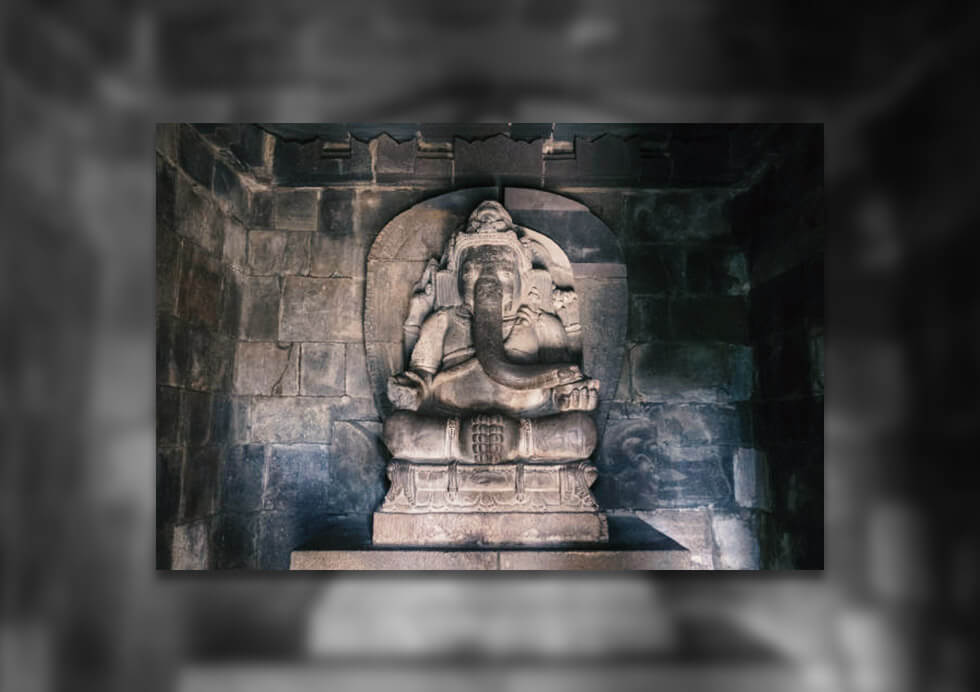
Indonesia boasts a remarkable representation of Lord Ganesha, housed within the inner sanctum of the Lord Shiva Temple in the renowned Prambanan Temple complex, situated in Yogyakarta. Dating back to the 9th century, this complex stands as a testament to Indonesia's rich Hindu cultural heritage and is honored as a UNESCO World Heritage Site.
The Prambanan Temple complex, originally built during the era of the Mataram Kingdom, flourished as a center of Hindu worship and artistry. Among its many marvels, the statue of Lord Ganesha stands out for its antiquity and cultural significance. Believed to have been crafted during the same period as the temple complex itself, this ancient artifact not only embodies the artistic finesse of its time but also holds profound religious importance for worshippers and scholars alike.
Ganesha, revered as the remover of obstacles and the patron of arts and sciences in Hindu mythology, is depicted here in a manner that reflects the local Javanese artistic style, blending traditional Hindu iconography with regional aesthetics. The statue's presence within the inner sanctum of the Shiva Temple underscores its role in the broader Hindu pantheon and its importance as a focal point of spiritual devotion.
Visitors to the Prambanan Temple complex are captivated not only by the architectural grandeur of its towering spires and intricate carvings but also by the spiritual ambiance exuded by the presence of such ancient and revered artifacts. The Ganesh statue at Prambanan serves as a poignant reminder of Indonesia's diverse cultural heritage and its enduring connection to Hindu traditions, offering visitors a glimpse into the profound spiritual and artistic legacies of the region.
The Prambanan Temple complex, originally built during the era of the Mataram Kingdom, flourished as a center of Hindu worship and artistry. Among its many marvels, the statue of Lord Ganesha stands out for its antiquity and cultural significance. Believed to have been crafted during the same period as the temple complex itself, this ancient artifact not only embodies the artistic finesse of its time but also holds profound religious importance for worshippers and scholars alike.
Ganesha, revered as the remover of obstacles and the patron of arts and sciences in Hindu mythology, is depicted here in a manner that reflects the local Javanese artistic style, blending traditional Hindu iconography with regional aesthetics. The statue's presence within the inner sanctum of the Shiva Temple underscores its role in the broader Hindu pantheon and its importance as a focal point of spiritual devotion.
Visitors to the Prambanan Temple complex are captivated not only by the architectural grandeur of its towering spires and intricate carvings but also by the spiritual ambiance exuded by the presence of such ancient and revered artifacts. The Ganesh statue at Prambanan serves as a poignant reminder of Indonesia's diverse cultural heritage and its enduring connection to Hindu traditions, offering visitors a glimpse into the profound spiritual and artistic legacies of the region.
Tallest Ganesh Idol at Khlong Khuean Ganesh International Park, Thailand

Thailand proudly hosts the tallest Lord Ganesh idol globally, standing an impressive 39 meters tall at the Khlong Khuean Ganesh International Park. Located in a picturesque setting, this monumental statue has become a prominent landmark and a cherished attraction for both locals and tourists alike.
Constructed in 2013, the statue represents a relatively recent addition to the world's diverse collection of unique Ganesh idol. Its towering height symbolizes not only reverence for Lord Ganesha but also serves as a testament to the artistry and engineering prowess of its creators. Set against the backdrop of the serene park grounds, the statue commands attention with its sheer size and detailed craftsmanship.
Khlong Khuean Ganesh International Park itself has gained popularity as a cultural and recreational destination. Beyond the awe-inspiring statue, visitors are drawn to the park's tranquil ambiance, lush greenery, and serene ponds, providing a serene retreat for spiritual reflection and leisurely exploration.
The depiction of Lord Ganesha in Thai culture often reflects local interpretations and artistic styles, blending traditional Hindu iconography with regional influences. As such, the towering Ganesha statue not only serves as a religious symbol but also as a cultural bridge, embodying Thailand's rich heritage and its embrace of diverse spiritual traditions.
For tourists and devotees alike, the Khlong Khuean Ganesh International Park and its monumental Ganesha statue offer a unique opportunity to experience the magnificence of Hindu art and spirituality amidst Thailand's natural beauty.
Constructed in 2013, the statue represents a relatively recent addition to the world's diverse collection of unique Ganesh idol. Its towering height symbolizes not only reverence for Lord Ganesha but also serves as a testament to the artistry and engineering prowess of its creators. Set against the backdrop of the serene park grounds, the statue commands attention with its sheer size and detailed craftsmanship.
Khlong Khuean Ganesh International Park itself has gained popularity as a cultural and recreational destination. Beyond the awe-inspiring statue, visitors are drawn to the park's tranquil ambiance, lush greenery, and serene ponds, providing a serene retreat for spiritual reflection and leisurely exploration.
The depiction of Lord Ganesha in Thai culture often reflects local interpretations and artistic styles, blending traditional Hindu iconography with regional influences. As such, the towering Ganesha statue not only serves as a religious symbol but also as a cultural bridge, embodying Thailand's rich heritage and its embrace of diverse spiritual traditions.
For tourists and devotees alike, the Khlong Khuean Ganesh International Park and its monumental Ganesha statue offer a unique opportunity to experience the magnificence of Hindu art and spirituality amidst Thailand's natural beauty.
Ancient Ganesh Statue in Gardez, Afghanistan
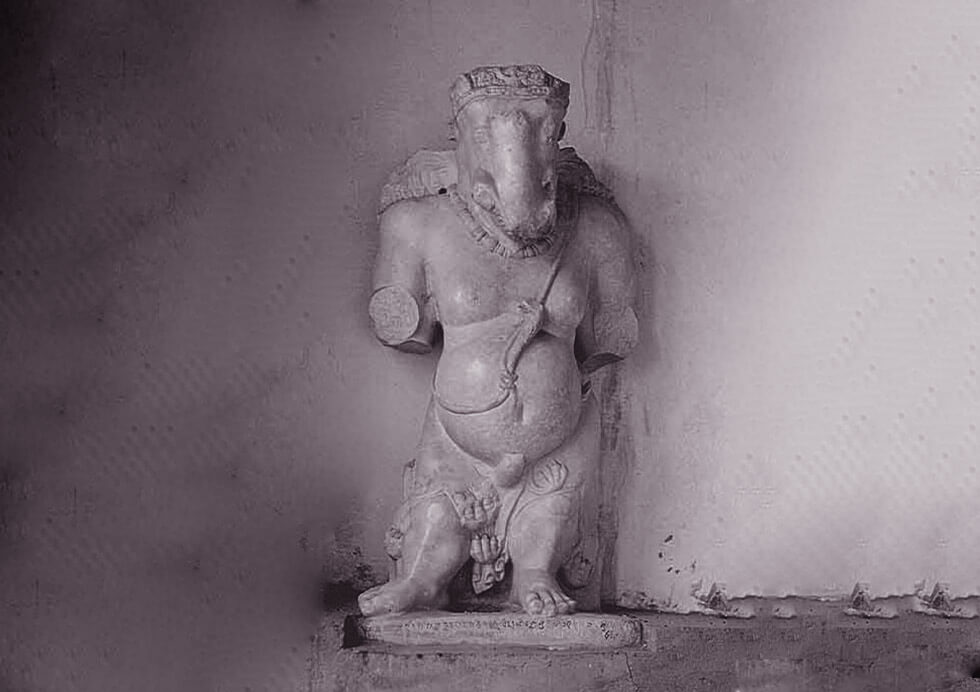
Afghanistan, known for its rich historical tapestry, holds traces of Hinduism dating back centuries. Among its archaeological treasures is a notable statue of Lord Ganesha discovered in Gardez, a city located in eastern Afghanistan. This artifact provides a glimpse into Afghanistan's diverse religious heritage and cultural connections.
The Ganesh statue, believed to originate from the 2nd or 3rd century CE, stands as a testament to the enduring presence of Hindu traditions in the region during ancient times. Its discovery underscores the historical intersection of cultures along the ancient trade routes that traversed Central Asia.
Unfortunately, specific details regarding the dimensions and material of the statue are not readily available from the sources at hand. However, its age alone places it among the earliest known depictions of Ganesha, reflecting the craftsmanship and religious practices of ancient Afghan communities.
The presence of such artifacts highlights the multicultural history of Afghanistan, where Hinduism once flourished alongside Buddhism and other belief systems. These statues not only serve as archaeological marvels but also as symbols of Afghanistan's diverse cultural mosaic and its contributions to global heritage.
Despite challenges posed by conflict and the passage of time, Afghanistan's archaeological sites continue to reveal fragments of its rich cultural legacy, offering insights into the spiritual and artistic expressions of its ancient inhabitants.
The Ganesh statue, believed to originate from the 2nd or 3rd century CE, stands as a testament to the enduring presence of Hindu traditions in the region during ancient times. Its discovery underscores the historical intersection of cultures along the ancient trade routes that traversed Central Asia.
Unfortunately, specific details regarding the dimensions and material of the statue are not readily available from the sources at hand. However, its age alone places it among the earliest known depictions of Ganesha, reflecting the craftsmanship and religious practices of ancient Afghan communities.
The presence of such artifacts highlights the multicultural history of Afghanistan, where Hinduism once flourished alongside Buddhism and other belief systems. These statues not only serve as archaeological marvels but also as symbols of Afghanistan's diverse cultural mosaic and its contributions to global heritage.
Despite challenges posed by conflict and the passage of time, Afghanistan's archaeological sites continue to reveal fragments of its rich cultural legacy, offering insights into the spiritual and artistic expressions of its ancient inhabitants.
Group of Ganesh Statues in Ireland
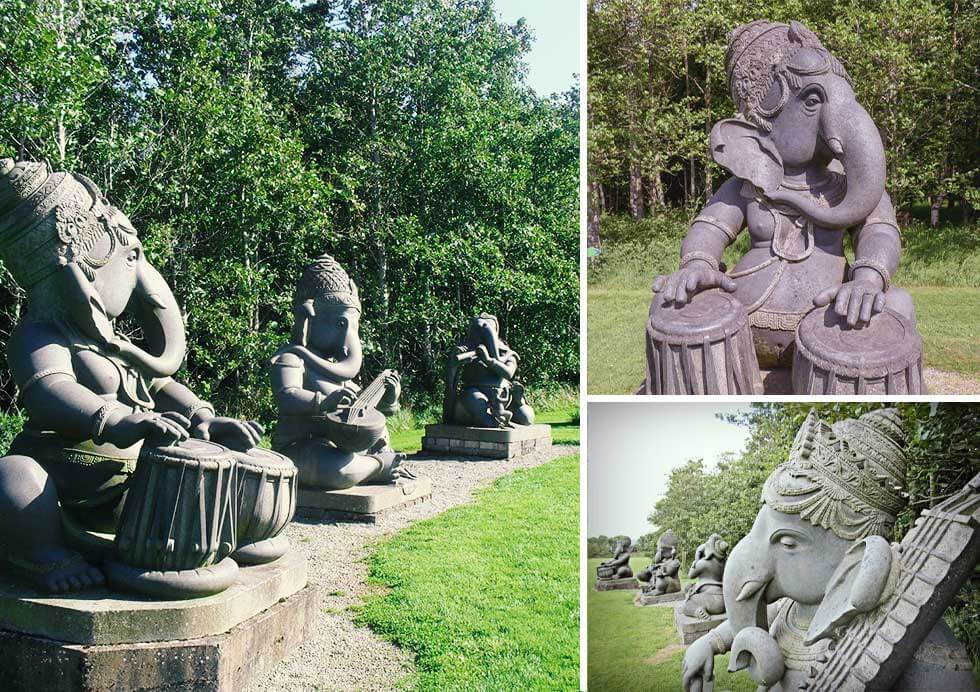
Ireland, known for its Celtic heritage and lush landscapes, might seem an unexpected place to encounter a marble Ganesh idol . However, there exists a grouping of nine statues in one location, each depicting the revered Hindu deity. Unfortunately, specific details regarding the exact location or the purpose behind these statues are not readily available.
The presence of nine statues is intriguing, particularly in the context of Hindu mythology. In Hinduism, the number nine holds significant symbolism related to Lord Ganesha. He is believed to have nine names (Navanayaka), nine forms or manifestations (Navarupa), and is worshiped at nine auspicious times during the day (Navakalevara). Therefore, it is plausible that each statue in this Irish collection represents one of these nine aspects of Ganesha.
While the exact reason for these statues being in Ireland remains unclear, their presence highlights the universal appeal and adaptability of Hindu deities in global cultures. The statues likely serve as symbols of cultural diversity and spiritual exploration in a country known for its ancient traditions and modern-day openness to multicultural influences.
Despite the lack of detailed information, the existence of these statues underscores the enduring fascination with Ganesha and the widespread admiration for his qualities of wisdom, intellect, and the ability to overcome obstacles, resonating far beyond traditional boundaries.
The presence of nine statues is intriguing, particularly in the context of Hindu mythology. In Hinduism, the number nine holds significant symbolism related to Lord Ganesha. He is believed to have nine names (Navanayaka), nine forms or manifestations (Navarupa), and is worshiped at nine auspicious times during the day (Navakalevara). Therefore, it is plausible that each statue in this Irish collection represents one of these nine aspects of Ganesha.
While the exact reason for these statues being in Ireland remains unclear, their presence highlights the universal appeal and adaptability of Hindu deities in global cultures. The statues likely serve as symbols of cultural diversity and spiritual exploration in a country known for its ancient traditions and modern-day openness to multicultural influences.
Despite the lack of detailed information, the existence of these statues underscores the enduring fascination with Ganesha and the widespread admiration for his qualities of wisdom, intellect, and the ability to overcome obstacles, resonating far beyond traditional boundaries.
Japanese Version of Lord Ganesha at Matsuchiyama Shoden Temple
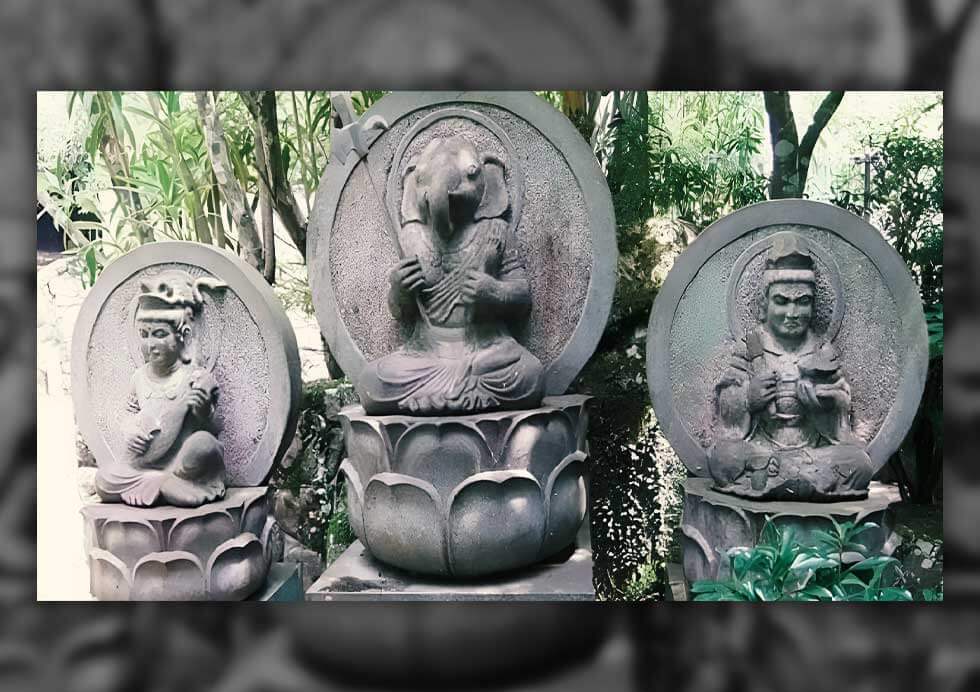
In Japan, amidst its rich tapestry of indigenous and imported beliefs, stands a unique statue of Lord Ganesha that reflects a distinct cultural fusion. Located within the 8th-century Matsuchiyama Shoden temple, this statue deviates from the traditional Hindu depiction of Ganesha and instead represents a Japanese interpretation of the deity.
The Matsuchiyama Shoden temple is dedicated to Kangiten, a syncretic deity in Japanese Buddhism that combines elements of Hinduism, specifically aspects of the goddesses Saraswati, Lakshmi, and Parvati. Kangiten is revered for qualities related to wealth, prosperity, and marital happiness, embodying a unique blend of Indian and Japanese spiritual traditions.
The Japanese version of Ganesha depicted at Matsuchiyama Shoden temple retains some familiar iconography, such as the elephant head and potbelly, which are characteristic of Hindu Ganesha. However, there are notable differences as well. For instance, the Japanese Ganesha typically features four arms, unlike the Hindu depiction that often showcases Ganesha with four or more arms.
This syncretic representation of Ganesha in Japan highlights the country's ability to assimilate and reinterpret foreign religious concepts within its own cultural context. The statue serves as a testament to Japan's historical openness to diverse spiritual influences and its unique artistic expressions. Visitors to Matsuchiyama Shoden temple are offered not only a glimpse into Japanese religious syncretism but also an opportunity to contemplate the universal themes of wisdom, prosperity, and overcoming obstacles embodied by Ganesha across different cultures.
The presence of such a statue underscores the cross-cultural exchanges and mutual enrichment that have shaped Japan's spiritual landscape over centuries, making it a fascinating example of how religious beliefs can transcend geographical boundaries while maintaining their distinctive cultural identities.
The Matsuchiyama Shoden temple is dedicated to Kangiten, a syncretic deity in Japanese Buddhism that combines elements of Hinduism, specifically aspects of the goddesses Saraswati, Lakshmi, and Parvati. Kangiten is revered for qualities related to wealth, prosperity, and marital happiness, embodying a unique blend of Indian and Japanese spiritual traditions.
The Japanese version of Ganesha depicted at Matsuchiyama Shoden temple retains some familiar iconography, such as the elephant head and potbelly, which are characteristic of Hindu Ganesha. However, there are notable differences as well. For instance, the Japanese Ganesha typically features four arms, unlike the Hindu depiction that often showcases Ganesha with four or more arms.
This syncretic representation of Ganesha in Japan highlights the country's ability to assimilate and reinterpret foreign religious concepts within its own cultural context. The statue serves as a testament to Japan's historical openness to diverse spiritual influences and its unique artistic expressions. Visitors to Matsuchiyama Shoden temple are offered not only a glimpse into Japanese religious syncretism but also an opportunity to contemplate the universal themes of wisdom, prosperity, and overcoming obstacles embodied by Ganesha across different cultures.
The presence of such a statue underscores the cross-cultural exchanges and mutual enrichment that have shaped Japan's spiritual landscape over centuries, making it a fascinating example of how religious beliefs can transcend geographical boundaries while maintaining their distinctive cultural identities.
Ganesh Idols for Home
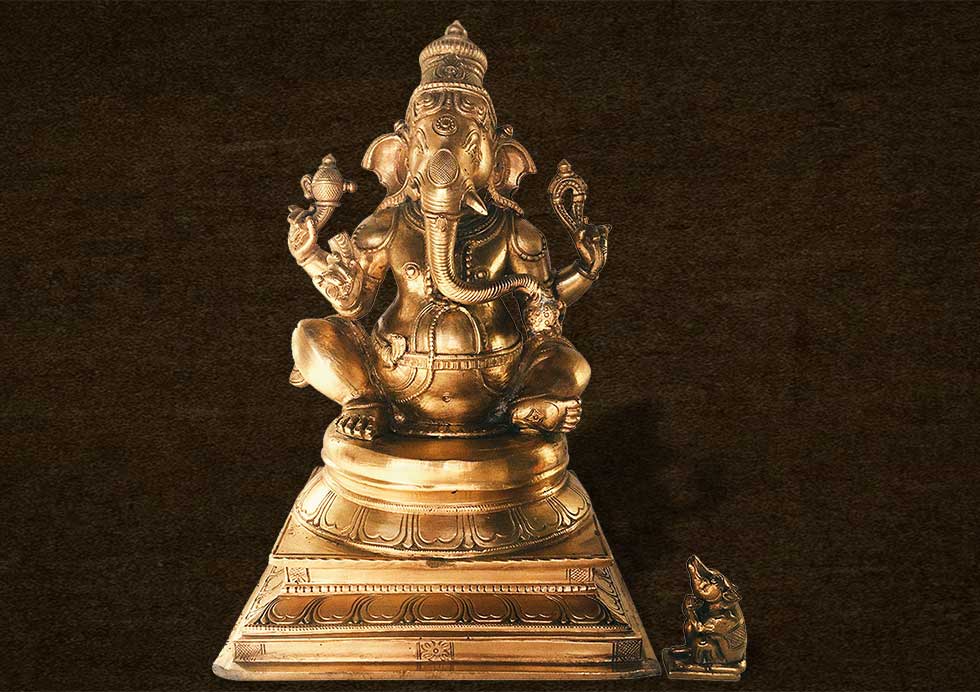
Ganesh idols for home are cherished symbols of prosperity, wisdom, and the removal of obstacles in Hindu households. He is known as Vighanharta and Vighnaharta. These idols, often crafted from materials like clay, metal, or marble, come in various sizes to suit personal preferences and space constraints. Families typically place them in prominent areas such as the puja room or living room, where they serve as focal points for daily prayers and rituals. Beyond their spiritual significance, Ganesh idols are also admired for their artistic craftsmanship, with intricate details that reflect regional styles and traditions. Whether traditional or contemporary in design, these idols create a serene ambiance, fostering a sense of devotion and peace within the home.
Conclusion
These statues are a testament to the global reach of Hinduism and the enduring popularity of Lord Ganesh. They also show the many different ways that people can express their devotion to this beloved deity. From ancient statues in Indonesia and Afghanistan to modern giants in Thailand, the statues of Ganesha reflect the rich and varied history of Hinduism around the world.


